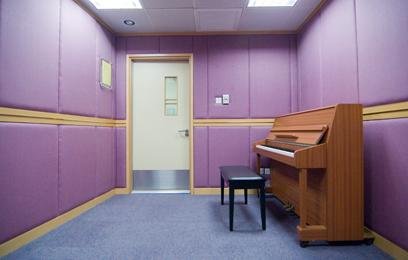Last Updated on November 12, 2022 by
Table of Contents
Music Practice Rooms
Music Practice Rooms are locations created for the purpose of achieving harmony, which results in musical notes that are both perfect and inspirational. It is critical that a rehearsal room be set up in a manner that is conducive to this activity.
As a result, it is normal for people to look for comforts in places like this, which may include things like fidelity in the sound and other aspects such as volume, which ensures that all of the instruments can be heard perfectly, that the sounds have good volume and do not bounce, and that the acoustics are perfect.
Some Advantages of Music Practice Rooms
One of the advantages of this type of room is that it eliminates the need to transport your instruments; for example, people who play the drums, whose instruments are difficult to transport (due to their weight and volume), or people who have very expensive equipment, which makes it extremely dangerous to transport them from one location to another.
For all of the reasons stated above, it is critical that your music practice rooms be equipped with a sufficient number of musical instruments that can be categorized as high-quality instruments so that you may feel comfortable using them and do not feel the need to bring your own instrument equipment.
It is necessary to consider the lighting situation. For groups that use scores, this is an extremely important detail because good lighting makes it easier to read them; on the other hand, for groups that play their repertoire from memory or that perform the montage of songs by ear, the lighting of the space is also extremely important because good lighting must be taken into consideration that favours the recording processes photographic and video taking to promote events and share on social networks.
Ventilation is also Critical
The presence of an adequate ventilation system is critical if you want to have a successful practice session, and this is especially true for large groups because more people in a space means more heat produced.
Furthermore, it should be noted that the materials used to condition the rooms are quite hot, which is due to the fact that a rehearsal room is a closed space, thus it is important to ensure that adequate air conditioning equipment is in place to keep the temperature under control.
Acoustic Doors
An acoustic door is kind of a solid door. It is frequently embellished with stamps around the edges. It is built with an isolated construction to limit the amount of noise and vibration that passes through it. To effectively isolate noises within a room, acoustic doors are required.
Through the use of advanced insulation engineering within the door body, as well as strong door construction and door gaskets, a considerable decrease in vibrations and sound that travel through the door can be achieved.
Applications of Acoustic Doors
As previously said, acoustic doors have a wide range of possible applications across a wide range of businesses and industry sectors. These doors are available in a variety of decibel ratings to accommodate the specific needs and requirements of each situation and application.
1. Industry and Audio Recordings
The acoustic door is a critical piece of equipment in the audio recording industry. In sound studios, it is essential to keep unwanted noise out of a recording session in order to maintain quality. In a recording studio, there may be a number of rooms or booths, each of which is tailored for a certain duty.
The studio control room is equipped with an acoustic door, which allows the sound technicians and producer to be separated from the other rooms and areas of the studio while yet being able to walk freely between them and the various locations.
Transparent glass panels in the centre of these doors are sometimes used to create a transparent effect. This is done in order for the persons on either side to be able to see each other readily. Acoustic insulation is not an optional feature in these circumstances; rather, it is absolutely important for the proper operation of the building.
2. Health Premises
Specific enclosures in health centres necessitate the usage of acoustic doors in order to function properly. For example, in an audiometry room, the quantity of noise in the room can make it difficult to hear the tones. Because of this, people’s perceived hearing thresholds differ from their actual hearing thresholds. It is necessary to examine the physical conditions of the room in order to ensure that all legal and technical criteria are met.
Additional appropriate conditioning or isolation measures must be put in place when the situation calls for it. The installation of an acoustic door would be one of these options.There are, however, additional requirements relating to the medical consultations themselves. There is an unquestionable requirement for privacy and discretion, which can be jeopardized by insufficient door insulation.
3. Factories with Loud Machinery
We have already expressed our concern about the need for noise management in factories and other industrial settings. People who work in the building will find it more pleasant and safer if they can keep the noise from leaking into other parts of the structure and spreading throughout it.
4. Business Meeting Rooms and Office Places
Another situation in which acoustic doors can be extremely beneficial is in the case of corporations or firms that have meeting rooms. The majority of firms are faced with the requirement to treat information that is considered sensitive as a group. Meetings involving people, product development, or corporate strategy are examples of what you might encounter.
It is also a component of a bigger program of technological measures that is part of the solution. One that improves the insulation of the space in order to keep outside noise out of the room. It is avoided that the environment required in this form of cage be disrupted in this manner.
Read More: Simple Solutions to Reducing Echo in your Living Room



























